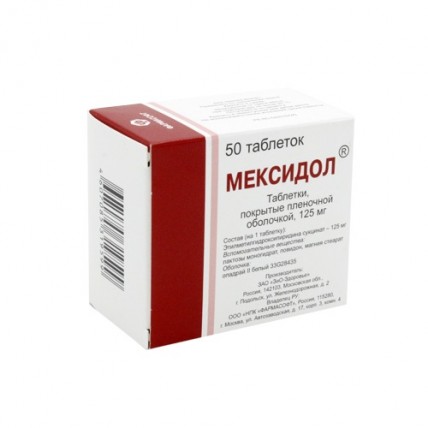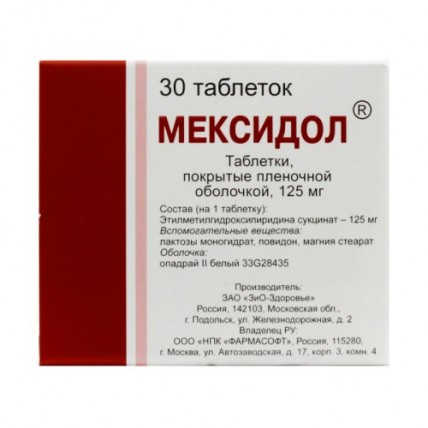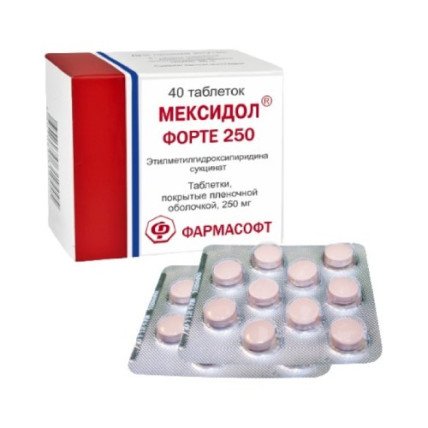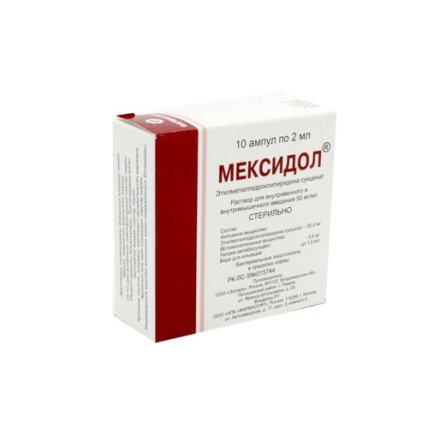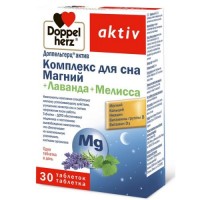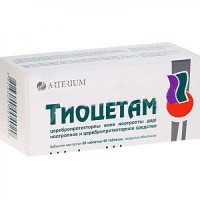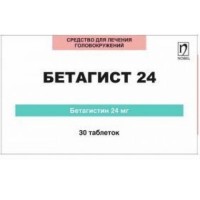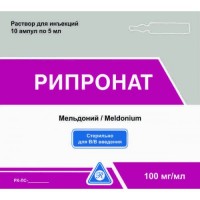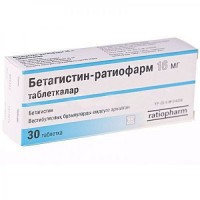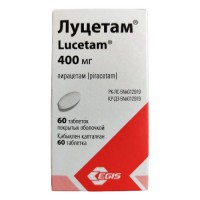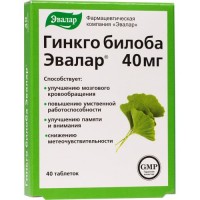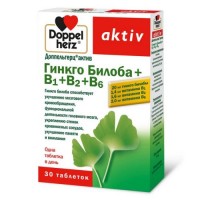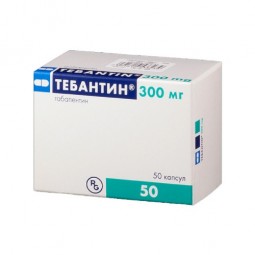MEXIDOL® (Emoxipine) Tablets and Injections
- $15.00
Emoxypine has been found to have an anxiolytic, anticonvulsant, nootropic activity, and to improve cerebral microcirculation. Mexidol is a relatively new compound whose chemical structure is closely related to that of pyridoxine, aka vitamin B6. After being first synthesized by L.D Smirnov and K.M Dumanyev at the Russian Institute of Biochemical Physics in the 1980s, the pharmaceutical properties of emoxypine has been the subject of several studies, and whereas it is already distributed in the Russian Federation, Georgia, and Peru under the tradename of Mexidol or Meloxicam, emoxypine is still widely unknown in other countries and is not approved by either the FDA or the EMA.
Common brand names: Mexidant, Cerecard, Astrox, Mexidol solution for injections 5%, Mexicor, Ethylmethylhydroxypyridine succinate
Synonyms: Mexidol, Mexidole, Mexidol succinate, Mexidol fandachem, Emoxypine Succinate, 2-Ethyl-6-Methylpyridin-3-ol succinate, 2-Ethyl-6-Methyl-3-pyridinol butanoate, 2-Ethyl-6-methyl-3-hydroxypyridine succinate, 2-Ethyl-6-methyl-3-pyridinol butanoate (1:1), 2-Ethyl-3-hydroxy-6-methylpyridine Succinate
What is MEXIDOL® (Emoxipine)?
MEXIDOL® (Emoxipine) is a neuroprotective and antioxidant product used to support the nervous and cardiovascular systems. It is designed to help protect brain cells from oxidative stress, improve blood flow, and enhance the body’s resistance to stress and oxygen deficiency. Available as film-coated tablets (125 mg) and injectable solution (50 mg/mL), MEXIDOL® is part of the pharmacotherapeutic group for other nervous system treatments (ATC code N07XX).
What conditions is MEXIDOL® used for?
MEXIDOL® is used as part of complex therapy for a wide range of neurological and vascular conditions, including:
- Consequences of acute cerebrovascular disorders, such as ischemic stroke or transient ischemic attacks
- Mild traumatic brain injury and post-traumatic effects
- Encephalopathies of various origins — circulatory, metabolic, post-traumatic, or mixed
- Vegetative (autonomic) dystonia and related symptoms
- Mild cognitive impairment caused by atherosclerosis
- Anxiety disorders linked to neurosis-like conditions
- Ischemic heart disease, as part of complex therapy
- Relief of alcohol withdrawal symptoms with neurotic and autonomic signs
- Post-intoxication conditions after taking antipsychotic medicines
- Asthenic and stress-related states, and preventive use during exposure to extreme factors
How should MEXIDOL® tablets be taken?
MEXIDOL® tablets are taken orally.
The usual dosage is 125–250 mg (1–2 tablets) three times per day.
The maximum single dose is 250 mg, and the maximum daily dose is 800 mg (up to six tablets).
Treatment generally begins with 125–250 mg once or twice daily, then gradually increases until the optimal effect is achieved. Therapy usually lasts 2–6 weeks, and for alcohol withdrawal — 5–7 days. Treatment should be stopped gradually over 2–3 days.
For patients with ischemic heart disease, treatment may continue for 1.5–2 months, with repeat courses recommended during spring and autumn under medical supervision.
How is MEXIDOL® injectable solution used?
The injectable form is used intravenously (IV) or intramuscularly (IM).
The usual single dose is 100–500 mg, and the daily total ranges from 500–1200 mg.
Administration examples:
- Acute cerebrovascular events: IV 200–500 mg 2–4 times daily for 10–14 days, then IM 200–250 mg 2–3 times daily for 2 weeks.
- Brain injury: IV 200–500 mg 2–4 times daily for 10–15 days.
- Discirculatory encephalopathy: IV 200–500 mg 1–2 times daily for 14 days, then IM 100–250 mg daily for 2 weeks.
- Mild cognitive impairment or anxiety: IM 100–300 mg daily for 14–30 days.
- Acute myocardial infarction: IV or IM for 14 days, combined with standard therapy. Infuse slowly in 100–150 mL of saline or 5% dextrose over 30–90 minutes.
- Glaucoma: IM 100–300 mg daily for 14 days.
- Alcohol withdrawal: IV or IM 200–500 mg 2–3 times daily for 5–7 days.
- Antipsychotic intoxication: IV 200–500 mg daily for 7–14 days.
- Acute pancreatitis or peritonitis: Doses adjusted individually, often starting with 200–500 mg 2–3 times daily, reduced gradually after stabilization.
IV administration is performed slowly — bolus over 5–7 minutes or infusion at 40–60 drops per minute. The solution is diluted in 100–150 mL of 0.9% sodium chloride or 5% dextrose.
What precautions should be considered?
MEXIDOL® should not be used by individuals with:
- Allergy to the active ingredient or excipients
- Severe liver or kidney dysfunction
- Fructose intolerance, Lapp lactase deficiency, or glucose-galactose malabsorption
- Pregnancy or breastfeeding
- Age under 18 years
Older adults generally do not require dose adjustments.
Care is advised when performing tasks that require high alertness, such as driving or operating machinery.
Injectable MEXIDOL® contains sodium metabisulfite, which may cause hypersensitivity or bronchospasm in people with asthma or sulfite sensitivity.
What side effects may occur?
Most users tolerate MEXIDOL® well.
Rare reactions may include:
- Drowsiness, headache, or dizziness
- Dry mouth, nausea, or stomach discomfort
- Heartburn, bloating, or diarrhea
- Rash, itching, or redness
- Fluctuations in blood pressure (temporary)
- Shortness of breath or throat irritation (when IV rate is too fast)
Overdose is uncommon due to low toxicity.
Possible signs include sleepiness or insomnia, usually resolving within 24 hours without special treatment.
What are the storage conditions?
Store MEXIDOL® in a dry, dark place at a temperature below 25 °C (77 °F).
Keep out of reach of children.
Shelf life: 3 years.
Do not use after the expiry date indicated on the package.
What does each form contain?
Tablets (125 mg):
Ethylmethylhydroxypyridine succinate 125 mg; lactose monohydrate, povidone K-30, magnesium stearate; coating with hypromellose, titanium dioxide (E171), lactose, macrogol, and triacetin.
Appearance: round, biconvex, white or slightly yellowish, with a mild characteristic odor.
Available packs: 30 or 50 tablets.
Injectable solution (50 mg/mL):
Active ingredient — ethylmethylhydroxypyridine succinate 50 mg per mL; excipients — sodium metabisulfite, water for injection.
Appearance: clear, colorless or faintly yellow solution.
Ampoules: 2 mL or 5 mL.
